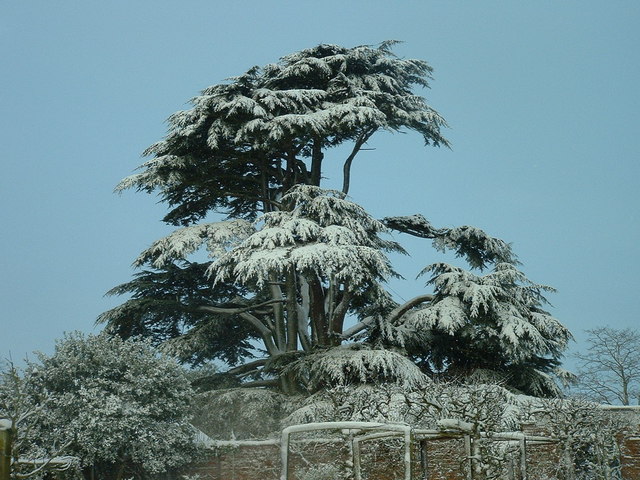Back in 2013, I did a piece about Lyme Park in Cheshire, which was where the famous ‘lake scene’ was filmed for the 1995 TV production of Pride and Prejudice, with Colin Firth as Mr Darcy emerging from the lake with diaphanous wet-through clothing. This Christmas TV viewers have had the opportunity to see the 2005 film of this classic tale by Jane Austen, starring Keira Knightley as Elizabeth Bennet and Matthew Macfadyen as Mr Darcy.
The action kicks off with Elizabeth strolling towards the Bennet family home, Longbourn. This scene was filmed at Groombridge Place, a moated manor house near Tunbridge Wells, Kent. Inside the home, the family are discussing the new occupant of nearby Netherfield Park, Mr Bingley. Later on the Bennets pay a visit to Netherfield, and as they depart we catch sight of its imposing exterior. The real-life property standing in for Netherfield is Basildon Park, Berkshire.
.jpg)
Basildon Park (4739480359). Photo by Jim Bowen, via Wikimedia Commons.
The clergyman Mr. Collins, a distant cousin of Mr. Bennett who has designs on Elizabeth, lives in a vicarage which in real life is in the village of Weekley in Northamptonshire. Haddon Hall near Bakewell in Derbyshire also puts in an appearance, with the banqueting hall acting as the interior of the Inn at Lambton.
Naturally, the most imposing property of all in the story is Pemberley, the home of Mr Darcy. The Chatsworth estate in Derbyshire is used for Pemberley in the 2005 film. This is not the first time Chatsworth has played the role of Pemberley. The TV drama Death Comes To Pemberley, aired in ...., also made use of Chatsworth. Meanwhile, Pemberley’s drawing room was filmed at Wilton House near Salisbury.
 |
| Chatsworth House, Derbyshire - geograph.org.uk - 2481560. Photo by Christine Matthews, via Wikimedia Commons. |
Finally, there are a couple of outside scenes of note. The scene which has Elizabeth standing on a precipice was filmed at Stanage Edge in Derbyshire. Meanwhile, way down to the south, the stunning gardens of Stourhead in Wiltshire feature in the scene in which, in pouring rain, Mr Darcy first proposes to Elizabeth and is sharply rebuffed. This scene takes place at a folly in the grounds known as the Temple of Apollo.
 |
| Stourhead Gardens - geograph.org.uk - 32663. Photo by Nigel Freeman, via Wikimedia Commons. |
Groombridge Place is currently closed for renovation so cannot be visited by the public. Basildon Park, an 18th century estate near the River Thames between Reading and Goring, is run by the National Trust and is open to visitors year round. Burghley House is currently closed for the winter, but is due to reopen in March 2024. Haddon Hall is open daily during the main season, and on selected dates in November and December. Chatsworth House and its park are open year round, and is especially appealilng in the run up to Christmas.
Stanage Edge lies in the Peak District, a couple of miles north of Hathersage, and is a gritstone escarpment popular with climbers. The Temple of Apollo in Stourhead Gardens is a fine example of classical buildings known as 'follies' which were erected in the estates of the landed gentry of times gone by. The gardens are run by the National Trust and are open year round.



_-_geograph.org.uk_-_855736.jpg)





